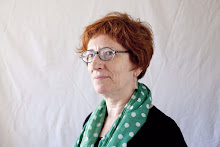Almost everybody is willing to share at the “basic” level, that is, as long as no specific DNA details are revealed, namely in terms of disease risks. Even so, it took some effort on my part to start sharing with people I don’t know, but once I understood that my privacy was not at stake, I quickly became addicted. Currently, I already have 17 “friends” in this genetic social network, each and every one of them an absolute stranger, that I invited or who invited me to share.
Once the sharing principle is accepted by both parts, it becomes possible to compare genomes through a functionality called “family inheritance”, that allows both persons to see if there are coinciding pieces of DNA in their respective chromosomes.
In fact, this option is supposed to be used to compare genes among family members, who know from the start that they share big chunks of DNA. And, from what I’ve read, it’s pretty unlikely to find this type of genetic coincidence, by chance, in people we’ve never heard of before.
So imagine my amazement when I found out that 4 out of my 17 “friends” are probably distant relatives, distant “cousins” of mine! It’s hard to believe, but that’s how it is: when I compared my genome-wide genetic data with the data from those 4 people, I discovered that whole segments of certain chromosomes suddenly turned blue on the diagram. In one case, the coincidence spans a sequence of 20 million DNA “letters”, or bases, on chromosome 5. In another, as the image shows, the coincidence involves a 10 million-base sequence on chromosome 4 (I’ve hidden the person’s name for obvious privacy reasons).

What does this mean? It means that, according to the partial genetic results we both received, we both inherited, from one of our parents (either our mother or our father), an identical chunk of some chromosome. In other words, we our DNA present a so-called “half-identical” match (i.e., contributed by only one of our parents). Which, in turn, means that our mother and the other person’s father (or whichever combination is responsible for the coincidence) shared (still share) half-identical chunks of their own DNA too. That is, they also were (are) distant (though slightly less distant) “cousins”. And so on, right back to a common ancestor who probably lived a few centuries ago.
Here is the answer I got from another one of my “cousins”, with whom I share a half-identical DNA sequence 10 million-bases-long on chromosome 9, when I voiced my doubts about such a conclusion: “Yes, it means that we definitely share a common ancestor. The precise point in time may be 300-400 years ago, depending on the rate of recombination in that region. It is unlikely that the common ancestor would be further back than 300-400 years, because recombination would have eliminated it from our common ancestry.” Seems reasonable enough to me.
I also asked a scientist I know who specializes in genetic ancestry and she confirmed.
Apparently, such a state of affairs is not that uncommon in those human communities, namely religious, where people didn’t marry much outside of their group – and which, at some point, became part of a Diaspora, spreading worldwide because of political and religious contingencies that arose in their home-countries.





No comments:
Post a Comment